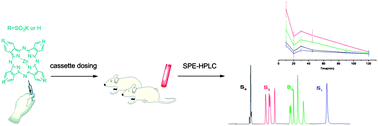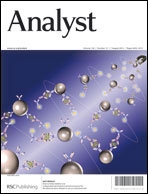A novel SPE-HPLC method for simultaneous determination of selected sulfonated phthalocyanine zinc complexes in mouse plasma following cassette dosing
Abstract
Sulfonated phthalocyanine zinc complexes (ZnPcSn) are a mixture of polymolecules with different number of the sulfonic groups. They are typical photosensitizers for photodynamic therapy (PDT). Analysis of the sulfonic phthalocyanine complexes in blood is a global technical challenge to developing this kind of photosensitizers into clinics. To circumvent the problem, we aimed at developing a novel solid-phase extraction (SPE)-HPLC method, which was primarily composed of (1) the SPE material that has both the aliphatic benzene group and hydrophilic ethylenediamino group bonded to the silica surface typically for retaining those hydrophobic compounds with some degree of hydrophilic anionic (negatively charged) functionality; and (2) the RP-Amide C16 HPLC column packed with palmitamidopropylsilane for both reversed-phase and anion exchange separation. The method was validated in terms of recovery, precision and accuracy for pharmacokinetic study with the photosensitizer following its intravenous cassette dosing to mice. The present study is the first report on using an SPE-HPLC mode to simultaneously determine the phthalocyanine-based polymolecule photosensitizer in blood. The study will aid in clinical development of photosensitizers.


 Please wait while we load your content...
Please wait while we load your content...